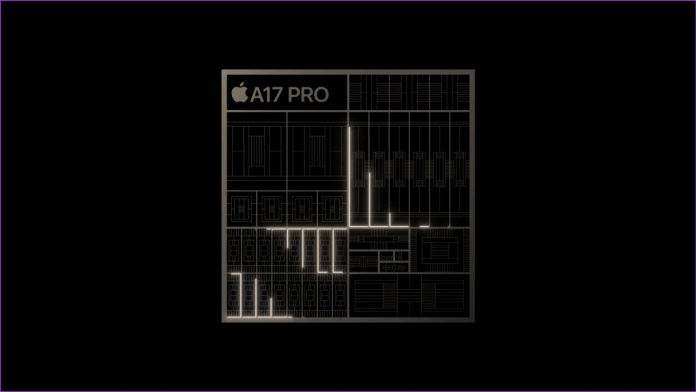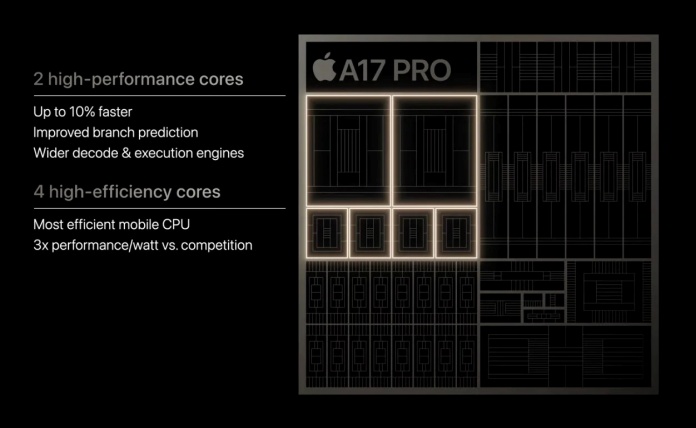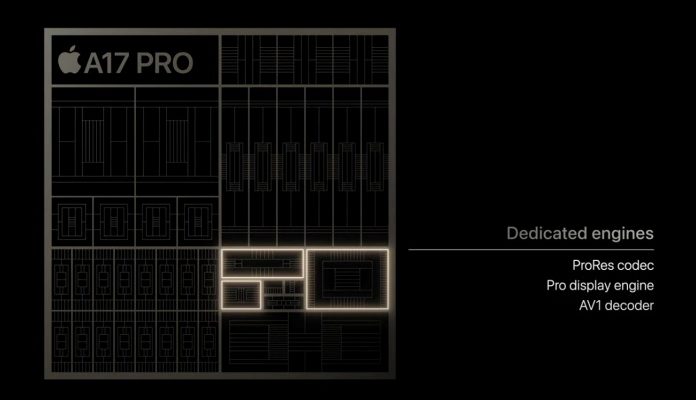Apple When it announces a new chipset, it is often greeted with excitement around the world. This year the attention was on the A17 Pro. So, how do you think it performs compared to the A16 Bionic? Here you go.
Production Process
A17 Pro: The highlight of the A17 Pro is TSMC’s latest 3nm Being the industry’s first 3 nanometer chip built on the manufacturing process. This nanometric reduction compared to the previous model means the chip can fit more transistors in the same space, resulting in better performance and energy efficiency. To be precise, the A17 Pro is approx. 19 billion transistors is hosting.
A16 Bionic: 4nm working with the process and 16 billion The A16 Bionic, which had around 10,000 transistors, was quite impressive at its time. However, with 3nm technology, the A17 Pro represents a major advance.
Raw Performance
CPU Cores: Both processors have a 6-core CPU. But the architectural improvements in the A17 Pro deliver what Apple describes as “the fastest single-threaded performance on any smartphone.”
Geekbench Analysis: Benchmarks point to a significant performance increase for the A17 Pro. Single-core performance in Geekbench shows an improvement of around 16% compared to the A16, while multi-core performance increases by around 13%.
AnTuTu Analysis: iPhone 15 Pro Maxon AnTuTu 1,641,883 got points. It scored 392,643 points in the CPU test and 597,734 points in the GPU test. In the memory department, it scored 306,164 points, surpassing the 233,925 points of the iPhone 14 Pro Max.
Graphical Ability
GPU: While the A16 Bionic hosts a 5-core GPU, the A17 Pro powers it with a 6-core GPU. According to Apple, this improvement provides up to 20% performance increase.
Real Performance: This isn’t just a numbers game. The added core means better processing of high-resolution graphics, from games to professional graphics tasks.
Moreover, the A17 Pro’s GPU includes hardware-based ray tracing, which is a significant improvement in rendering realistic lighting and shadow effects. To be precise, the A17 Pro chip offers four times faster ray tracing performance compared to the A16 Bionic.

GFXBench Benchmarks: In GPU benchmark results on GFXBench, the A16 outperformed the Bionic by significant margins. For example, in the Aztec Ruins High-End Off-Screen test, the iPhone 15 Pro Max with A17 Pro performed around 19% better than the iPhone 15 Plus with A16 Bionic. In the Manhattan 3.1 Offscreen test, the A17 Pro improved by up to 31.5% with 199.8fps compared to the A16’s 151.9fps. The A17 Pro appears to deliver further improvements in GPU performance, although not all benchmarks reach the advertised 20% increase.
Artificial Intelligence and Abilities
Neural Engine: Artificial Intelligence (AI) tasks play a crucial role in modern smartphones. While both chips feature a 16-core Neural Engine, the A17 Pro version is said to be twice as fast, performing up to 35 trillion operations per second. This leads to increased performance on AI tasks and better photo and video optimizations.
Memory and Efficiency
RAM: The A17 Pro has 8GB of LPDDR5 RAM, which dwarfs the A16’s 6GB. This additional memory will aid in multitasking, allowing for smoother application transitions and better performance on memory-intensive tasks.
Productivity: A17 Pro’s 3nm process increases energy efficiency, allowing tasks to be performed with less power consumption. This leads to longer battery life and less heat generation, keeping the device cool during demanding operations.

Improved ISP (Image Signal Processor)
Photonic Engine: The A17 Pro features improvements to the Image Signal Processor, including the new Photonic Engine and Smart HDR 5, resulting in better photo and video quality compared to the A16 Bionic.
Mesh Shading: It also introduces Mesh shading and delivers video features like 2.8K @ 60 fps in Cinematic and Action Modes, surpassing the A16’s 30 fps limit. Additionally, the A17 Pro shoots 48MP HEIF images as well as 48MP Pro RAW images.
Connectivity and Additional Features
USB 3 Performance: A17 Pro brings USB 3 features to iPhones, enabling faster data transfer speeds of up to 10 Gbps; This is a significant step up from the 480Mbps seen on the A16 Bionic.
Media Engines: The A17 Pro also stands out with the addition of the AV1 codec, which is expected to improve video streaming on the new iPhones.
The A17 Pro builds on the foundation of the A16 Bionic with a number of improvements and enhancements, solidifying its position as a formidable competitor in the mobile chipset industry.
The significance of these improvements may vary from user to user, but for those looking for top-level performance, the A17 Pro sets a new standard in the ever-evolving field of smartphone technology.
